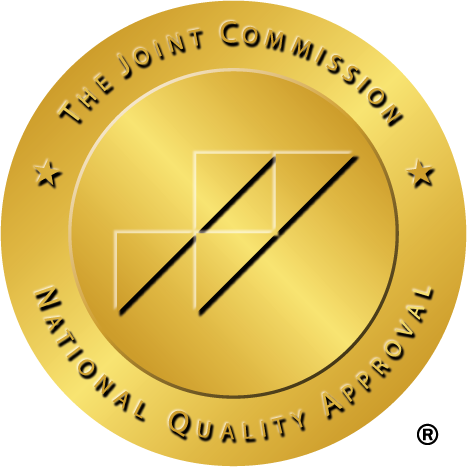KEY POINTS
- Complex PTSD arises from prolonged trauma and involves symptoms beyond those of PTSD.
- Diagnosing complex PTSD involves clinical assessments and other diagnostic tools.
- Complex PTSD requires integrative treatment that may include different types of therapeutic modalities, medications, and holistic therapy.
Complex post-traumatic stress disorder (CPTSD) is a severe and often debilitating condition that arises from prolonged or repeated exposure to trauma, typically in situations where escape is difficult or impossible, like child abuse or domestic violence.[1] It shares similarities with traditional PTSD but presents with additional symptoms and complexities.
There is no test to diagnose complex PTSD, but there are diagnostic tools to identify CPTSD as a distinctive disorder from PTSD and determine a treatment plan.
SPEAK WITH AN ADMISSIONS COUNSELOR TODAY
What Is Complex PTSD?
Most people are familiar with PTSD, but complex PTSD is a separate condition that develops in response to long-term trauma, such as ongoing abuse, captivity, or chronic exposure to highly stressful situations. Unlike PTSD, which is often associated with a single traumatic event or isolated events, CPTSD results from prolonged trauma, particularly in situations where the person feels trapped or powerless.
There are several differences between PTSD and CPTSD, but the primary one is the length of the trauma. PTSD often arises from a single event, such as a natural disaster, assault, or car accident, while CPTSD occurs with prolonged or repeated trauma, such as prolonged child abuse or being held captive for a long period.
The symptoms can also differ. PTSD is marked by flashbacks, nightmares, avoidance of trauma reminders, and heightened arousal. CPTSD includes all PTSD symptoms but also features additional symptoms such as difficulties with emotional regulation, persistent negative emotions, problems with self-identity, and interpersonal difficulties.[2] Some symptoms overlap, however, such as intrusive memory, hypervigilance, and avoidance.
How Common Is CPTSD?
CPTSD is less common than traditional PTSD but still affects a significant portion of the population. The estimated prevalence rates are 1.5% for PTSD and 0.5% for CPTSD.[3] However, CPTSD is a new concept that arose when researchers recognized additional symptoms that emerge from long-term trauma that aren’t present with trauma that occurs from a single traumatic event.
Causes and Symptoms of CPTSD
There are several possible causes of CPTSD, including continuous exposure to traumatic events, such as physical or emotional abuse, domestic violence, or chronic neglect. This is common with long-term child abuse, combat scenarios, or long-term intimate partner violence.
Trauma experienced in situations where the person feels helpless or trapped, such as long-term abuse or captivity that may occur with sex trafficking, can also cause CPTSD. People who have been victims of torture, slavery, or genocide may also develop CPTSD.
Traumatic stress is associated with permanent changes in key areas of the brain, including the amygdala, the part of the brain that processes fear, and the hippocampus, the part of the brain that’s responsible for learning and memory.[4] The prefrontal cortex, the part of the brain that’s involved in executive function like personality expression and decision making, is also affected.
The symptoms of CPTSD include:
- Re-experiencing trauma, such as intrusive memories, nightmares, and flashbacks.
- Avoiding the trauma reminders and emotional numbness
- Increased arousal, irritability, and hypervigilance.
- Emotional regulation issues, such as difficulty managing emotions and intense feelings of anger or sadness.
- Persistent feelings of worthlessness or guilt.
- Difficulties in relationships, such as trust issues or a sense of isolation.
How Is CPTSD Diagnosed?
There is no test to diagnose CPTSD. Instead, the diagnosis involves a comprehensive assessment by a mental health professional. The process often includes a clinical interview with a detailed discussion of trauma history, symptoms, and current functioning. The results of the assessment are evaluated against the Diagnostic and Statistical Manual of Mental Disorders (DSM-5) criteria for PTSD and CPTSD.
Self-report questionnaires may be used to diagnose CPTSD, such as the Clinician-Administered PTSD Scale (CAPS) or the PTSD Checklist (PCL). These tests can be helpful in assessing symptoms of CPTSD.
How Is CPTSD Treated?
The treatment for CPTSD typically involves a combination of psychotherapy, medication, and support services.
Psychotherapy, or talk therapy, is the main treatment for CPTSD. Often, cognitive behavioral therapy (CBT), or trauma-focused CBT, is used. This type of therapy relies on a trained, licensed mental health professional offering support, education, and guidance to help you understand how your body responds to trauma and learn how to manage symptoms. Because avoidance is common with PTSD and CPTSD, therapists may use exposure therapy to encourage you to enter situations that cause anxiety and learn to cope in healthy ways.
Another type of trauma-focused therapy is eye movement desensitization and reprocessing (EMDR). With this treatment, you focus on sounds or movements while thinking about the traumatic events, which can relieve some of the emotional charge that’s associated with them.
Dialectical behavioral therapy (DBT) may also be used. Similar to CBT, DBT was created for people with intense emotions and focuses on understanding and managing feelings in healthier ways.
There are no medications approved by the FDA to treat CPTSD specifically, but some medications can help with the symptoms. Antidepressants like norepinephrine reuptake inhibitors (SNRIs) or selective serotonin reuptake inhibitors (SSRIs), anti-anxiety medications, and sleep medications may be used.
In addition to evidence-based therapies, holistic programs like art therapy and yoga can help with mood regulation and may inspire feelings of hope. Support groups can be an important part of CPTSD recovery and building a network of recovery peers with similar experiences.
Get Help for CPTSD
Complex PTSD can be debilitating, often including frightening or challenging moments and reliving trauma, which can take a toll on your physical and mental health. Fortunately, professional treatment with evidence-based therapies can help you manage your traumatic memories and establish healthy coping strategies.
SPEAK WITH AN ADMISSIONS COUNSELOR TODAY
Related Topics
Frequently Asked Questions About Complex PTSD
Sources
[1,2] Va.gov: Veterans Affairs. Complex PTSD. (2007, January 1). Retrieved from https://www.ptsd.va.gov/professional/treat/essentials/complex_ptsd.asp on 2024, August 29.
[3] Guzman Torres, E., Krause-Utz, A., & Sack, M. (2023, January 5). Predictors of complex PTSD: The role of Trauma Characteristics, Dissociation, and Comorbid Psychopathology. Borderline personality disorder and emotion dysregulation. Retrieved from https://www.ncbi.nlm.nih.gov/pmc/articles/PMC9814348/ on 2024, August 29.
[4] Bremner, J. D. (2006). Traumatic stress: Effects on the brain. Dialogues in clinical neuroscience. Retrieved from https://www.ncbi.nlm.nih.gov/pmc/articles/PMC3181836/#:~:text=Brain%20areas%20implicated%20in%20the,norepinephrine%20responses%20to%20subsequent%20stressors on 2024, August 29.



